|
Displaying items by tag: antiquities

A new exhibition sponsored by BP will bring over 70 masterpieces back to the UK after 234 years. The paintings, which originally hung at Houghton Hall in Norfolk, England during the 1720s, were part of Britain’s first Prime Minister Robert Walpole’s collection. The exhibition includes works by Sir Anthony Van Dyck (1591-1644) and Rembrandt (1606-1669), which will hang in their original positions in Houghton Hall.
The show opens on May 17, 2013 and has been met with some criticism. Many of the works on view are on loan from the Hermitage Museum and other Russian institutions as well as the National Gallery in Washington, D.C. and the Metropolitan Museum of Art in New York. Critics feel that BP’s involvement is meant to benefit its relationship with Russia and that the company chooses its sponsorship events based on business rather than its interest in the art.
After Walpole’s death, his illustrious collection was sold to Russia for $61,355 and was sent from Britain 1779. Houghton Hall is currently owned by Walpole’s descendants and contains the furniture, bronzes, and antiquities that once belonged to the former Prime Minister.
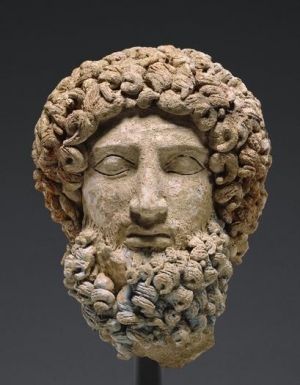
For years, Italy, Greece, and other ancient lands have accused American museums of ignoring evidence that antiquities in their collections were looted from archaeological sites. Five years ago, the Association of Art Museum Directors (AAMD) responded by making the requirements for acquiring ancient works much more stringent. The revised guidelines advised American museums against acquiring works unless solid proof existed that the artifact, prior to 1970, was outside the country where it was discovered in modern times, or was legally exported from that country after 1970.
1970 remains an important date, as it marks the year UNESCO put a stop to the illicit trafficking of antiquities. The year is now regarded as the standard cutoff for collecting. Works that appear on the market without documentation dating back that far are much more likely to have been stolen, looted, or smuggled out of their countries.
On Wednesday, January 30, 2013 the AAMD announced a few additional restrictions for American museums. The AAMD, which has 217 member museums in North America, now requires institutions to post a public explanation on the AAMD’s website if they acquire any ancient works with spotty ownership records. In addition, the museum much provide an image of the object, any known provenance information, and an explanation as to why they decided to acquire the work. If an institution fails to comply, they will be subject to ethical scrutiny and possible expulsion from the AAMD.
Officials hope that the tighter acquisition regulations will discourage American museums from obtaining questionable artifacts while supporting transparency between the United States and nations of origin who may lay claim to the antiquities.
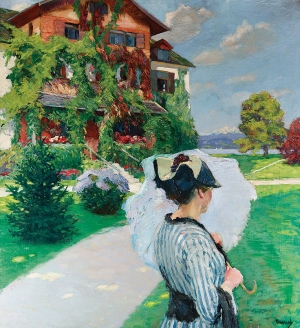
2nd Annual Naples Art, Antique & Fine Jewelry Show
February 8–11, 2013; Preview: February 7, 2013
Naples Exhibition Center, 100 Goodlette Road
South Naples, Florida 34102
10th Anniversary Palm Beach Jewelry, Art & Antique Show
February 16–19, 2013; Preview: February 15, 2013
Palm Beach Country Convention Center, 650 Okeechobee Blvd.
West Palm Beach, Florida 33401
After its successful debut in 2012, The Palm Beach Show Group (PBSG) is proud to announce that the Naples Art, Antique & Jewelry Show will be held this year from February 8th to the 11th. More than 75 high-caliber dealers will be exhibiting. As an indicator of how strong the inaugural show was, the majority of the 2012 participating dealers signed up again for 2013.
Scott Diament, President and CEO of the PBSG remarked, “The second annual Naples Show will again provide exhibitors with the unique opportunity to not only meet sophisticated and educated clientele from Florida’s Paradise Coast, but also from the Midwest region, an area from which many attendees travel during this peak season.” Show visitors will gain access to major works of art, antique and estate jewelry, furniture, porcelain, Asian antiquities, American and European silver, glass, textiles, sculpture, contemporary art and many more of the world’s most beautiful collections.
The show's location is ideal for collectors and decorators alike, located just steps from Fifth Avenue, Naples’ world-renowned shopping, dining and entertainment district, and its cultural attractions including museums, theaters, and art galleries.
On President’s Day Weekend, following just four days after the Naples Show, the Palm Beach Jewelry, Art & Antique Show is celebrating its 10th anniversary. With the addition of so many top painting dealers this year, it has become the preeminent show for American and European art of the nineteenth and twentieth centuries. In the art and antiques industry, this is an annual must-attend event and a hallmark in Palm Beach. Many exhibitors, including Peter Finer (the world’s leading specialist in antique arms and armour and new to the show this year) also exhibit at other top-notch shows such as TEFAF Maastricht, The Winter Antiques Show, Masterpiece London and The American Art Fair.
The Palm Beach Show was so successful last year that over 50 dealers were waitlisted for this year's show since the demand to exhibit exceeded capacity, an exceedingly rare situation in this volatile economic climate.
“Our Naples Show is the perfect complement to our Palm Beach Show,” adds Diament. “We are now providing our exhibitors with tremendous back-to-back exposure to the most affluent collectors from the Northeast, who choose to winter in Southeast Florida, and the most affluent collectors from the Midwest, who choose to spend their winters on the West Coast of Florida. Thousands of patrons—from private collectors to museums curators to investors—are anticipated to attend.
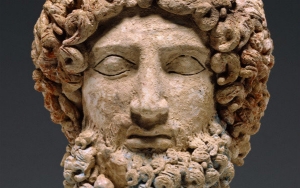
The J. Paul Getty Museum in Los Angeles will return a terracotta head depicting the Greek god Hades to Sicily. The museum has been working with Italian officials for two years to decide whether or not the artifact should be returned. The Getty purchased the terracotta head from New York collector Maurice Tempelsman for $530,000 in 1985. Tempelsman had originally acquired the piece from the disgraced antiquities dealer Robin Symes.
Officials determined that the terracotta head was originally located in Sicily at a sanctuary site for the goddess Demeter and her daughter Persephone. The piece’s provenance was discovered by comparing the head to four terracotta fragments found near the famous and highly looted archaeological site Morgantina in Sicily. It soon came to light that the head was illegally excavated from Morgantina in the early 1970s.
The Getty entered into an agreement with Italy’s Ministry of Culture in 2007 after a long legal battle regarding looted works and the museum’s former curator, Marion True. The Getty now has connections in various parts of Italy to facilitate cultural exchange and has been working closely with Sicilian officials since 2010.
The head of Hades will be on view at the Getty Villa as part of the exhibition The Sanctuaries of Demeter and Persephone at Morgantina through January 21, 2013. The work will then join the Getty-organized traveling exhibition Sicily: Art and Invention between Greece and Rome before being placed in Sicily’s Museo Archeologico.
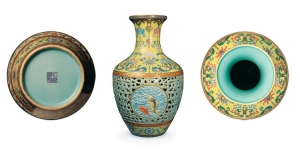
An ornately decorated 18th century Chinese porcelain vase sold for a record-setting $83 million in London on November 11, 2010. The vase, which was made for the Qianlong Emperor, soared past its presale estimate and became the highest-selling Asian work of art ever offered at auction. However, the original buyer failed to pay for the vase and the piece is now being sold for less than half its record-setting price.
The vase’s owners, Tony Johnson, a retired lawyer, and his mother, Gene, have held on to the work for over two years after the original sale without seeing a profit. Johnson and his mother recently found another buyer for the vase, which will sell for an undisclosed amount believed to be between $32.1 million and $40.2 million. The London-based auction house Bonhams helped facilitate the sale.
The recent price tag is much more sensible for the Qing-dynasty vase, which features a reticulated body painted in the famille rose palette. The sale of Chinese art and antiquities peaked in 2010, leading to a number of major sales that were not always realized. The demand for Chinese works of art has since leveled off.
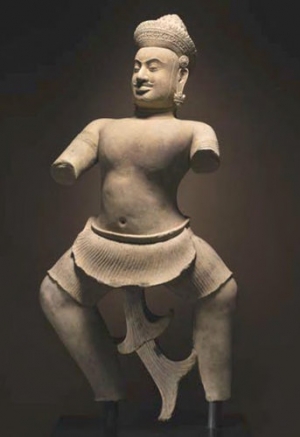
British art collector, Douglas A.J. Latchford, has spent decades building his reputation as one of the foremost experts in Khmer antiquities. Latchford, a resident of Thailand, was knighted in 2008 by the Cambodian government for admirably returning 14th-century Khmer artifacts.
In sharp contrast to his previous accolades, Latchford is currently the subject of a civil complaint files by the U.S. attorney’s office. Federal lawyers state that Latchford, referred to in proceedings as “the Collector,” bought a 10th century Khmer warrior statue known as the Duryodhana in the 1970s knowing that it had been looted from a temple during the Cambodian civil war.
While Latchford denies ever having owned the work, court papers claim that he purchased the statue from a Thai dealer who acquired the work from an organized looting network. Allegedly, Latchford then helped get the piece into Britain by concealing what was actually being shipped. Upon its arrival to the U.K., the auction house Spink & Son sold the statue to a Belgian collector in 1975. The collector’s widow is the Duryodhana’s current owner.
The widow approached Sotheby’s New York in 2010, hoping to sell the 500-pound sandstone statue. However, the sale was put on hold because of objections from the Cambodian government. While lawyers are hoping to return the work to Cambodia, the auction house still plans on selling the treasure, stating that there is no evidence to prove that the statue was looted or that it is the property of the Cambodian government.
Latchford has been collecting Cambodian antiquities for over 55 years and has donated many works to well-known institutions, including the National Museum in Phnom Penh and the Metropolitan Museum of Art. A judge is expected to rule on the Duryodhana case within the next few months.
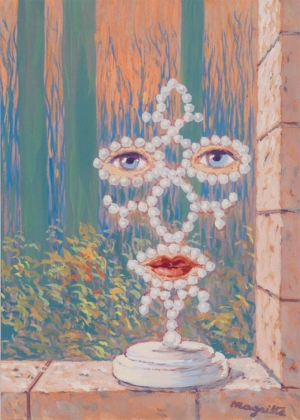
Now in its 58th year, the Brussels Antiques and Fine Art Fair (BRAFA) will take place January 19-27, 2013 at the exhibition space, Tour & Taxis. Featuring 128 dealers from 11 countries, the fair will present works from the Middle Ages to the 20th century including antiquities, jewelry, furniture, ceramics, drawings, engravings, Old Master as well as modern paintings, sculpture, textiles, contemporary art, photography, and much more.
After drawing in 46,000 visitors last year, BRAFA organizers have made a number of adjustments in hopes of surpassing 2012’s numbers. There will be 26 new exhibitors present and an increased emphasis has been placed on pre-Columbian art; archaeology; primitive arts; 17th to 19th century furniture; 19th to 20th century paintings, sculptures, and drawings; Asiatic arts; 20th century decorative arts; and modern and contemporary art. BRAFA has also added a new section to this year’s fair devoted to manuscripts. Exhibitors in this section include Signatures (Paris), Librairie Thomas-Scheler (Paris), and Sanderus Antiquariaat (Ghent, Belgium).
In honor of the fair’s tenth year at Tour & Taxis, BRAFA’s architects, Volume Architecture, have designed an extraordinary entrance inspired by Byzantine architecture, particularly that of the mosques in Istanbul.
VIP guests will be given a sneak peek of the impressive fair at BRAFA’s exclusive charity event on January 18. A silent auction will be held during the evening and proceeds will benefit the Merode Foundation to support its work on educational and social projects in Brussels’ working class neighborhoods.
Exhibitor highlights include Whitford Fine Art (London), which specializes in French and British 20th century painting and sculpture, Leysen Jewelers (Belgium), jewelers to the Belgian royal family, and Guy Pieters Gallery (Paris/Belgium), a leading force in the contemporary art world for the past 30 years.

Subhash Kapoor, a once-established antiquities dealer in New York, has been the source of much controversy over the past few months. In July, authorities asked American museums to search their collections for any works obtained from Kapoor after it was revealed that he was in possession of looted antiquities. Allegedly, Kapoor has trafficked more than $100 million worth of stolen Indian artifacts and on December 5, authorities added to his list of thefts after a raid at the Port of Newark.
U.S. Immigration and Customs Enforcement agents with Homeland Security Investigations teamed up with Indian authorities and the Manhattan District Attorney’s office and seized more than $5 million worth of artifacts including a 14th century statue of the Hindu deity, Parvati, and four bronze figures from India’s Tamil Nadu region. It is believed that all of the works were stolen from Indian temples. The The Parvati statue has been in the possession of six different dealers and is marred by a litany of false provenances despite being listed on an Interpol database of stolen artworks.
Kapoor ran the Art of the Past Gallery on Madison Avenue from 1974 until his arrest last July. He has donated and sold antiquities to many distinguished institutions including the Metropolitan Museum of Art. Kapoor is currently facing criminal charges in India.
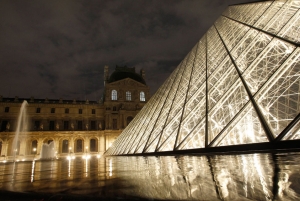
Paris’ Musee du Louvre and the Fine Arts Museums of San Francisco, which includes the Legion of Honor and the de Young Museum, announced that they have reached a mutual agreement and will collaborate on a series of exhibitions and exchanges. The institutions will share works from their incendiary collections over the course of the next five years including antiquities, paintings, decorative arts, prints, drawings, textiles, and sculptures.
The Louvre and Fine Arts Museums have been working on the arrangement for the past two years and will celebrate its commencement with the exhibition, Royal Treasures from the Louvre: Louis XIV to Marie-Antoinette. The show, which opened on November 17 and features a collection of decorative arts from the French monarchy, will be on view through March 17, 2013.
The agreement will allow each world-renowned institution to broaden their international reach and inhabitants of each city will have a new selection of masterpieces to view. Loans between the museums may include entire exhibitions or single objects.
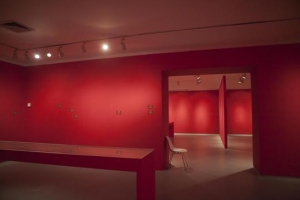
While rocket fire is a normal occurrence in southern Israel, the recent attacks on Tel Aviv, the country’s northern capital city, has art museums in the area taking extra precautions. The walls of the Tel Aviv Museum of Art have been stripped and nearly 200 works, including approximately 100 works by relatives of the Renaissance master Pieter Brueghel the Elder, were moved to a rocket-proof safe late last week.
While the Israeli-Palestinian conflict has continued to escalate, other museums are following suit. The curator of the Ashdod Art Museum in southern Israel has taken down 15 works by the leading Contemporary Israeli artist, Tsibi Geva, and placed them in a vault deep underground. The structure is designed to withstand both rocket fire and biological weapons. It was the first time the Ashdod Museum has taken down any art amid attacks since opening in 2003.
While air strikes are creeping up from the southern Israel’s traditional rocket range to Jerusalem and Tel Aviv, some institutions are holding out on stashing their works. The Eretz Israel Museum in Tel Aviv, which specializes in Near Eastern antiquities and other art, has left its treasures in place. The Israel Museum in Jerusalem, which houses some of the country’s most prized antiquities and cultural artifacts has also continued to operate as usual.
The last time the Tel Aviv Museum of Art took down works during a conflict was in 1991 when Iraqi scud missiles pounded the city during the Gulf War.
|
|
|
|
|